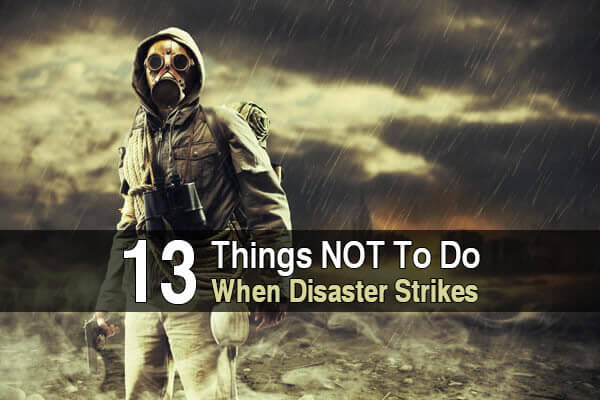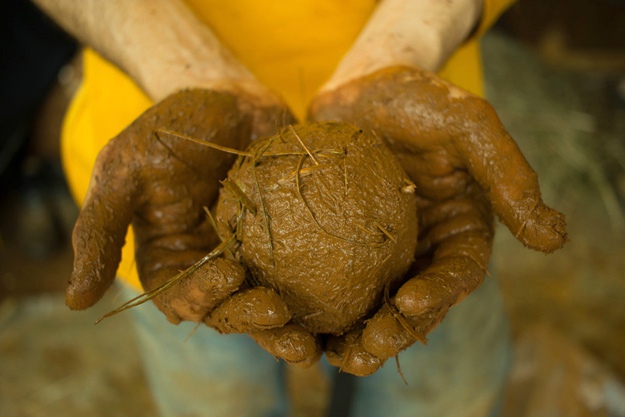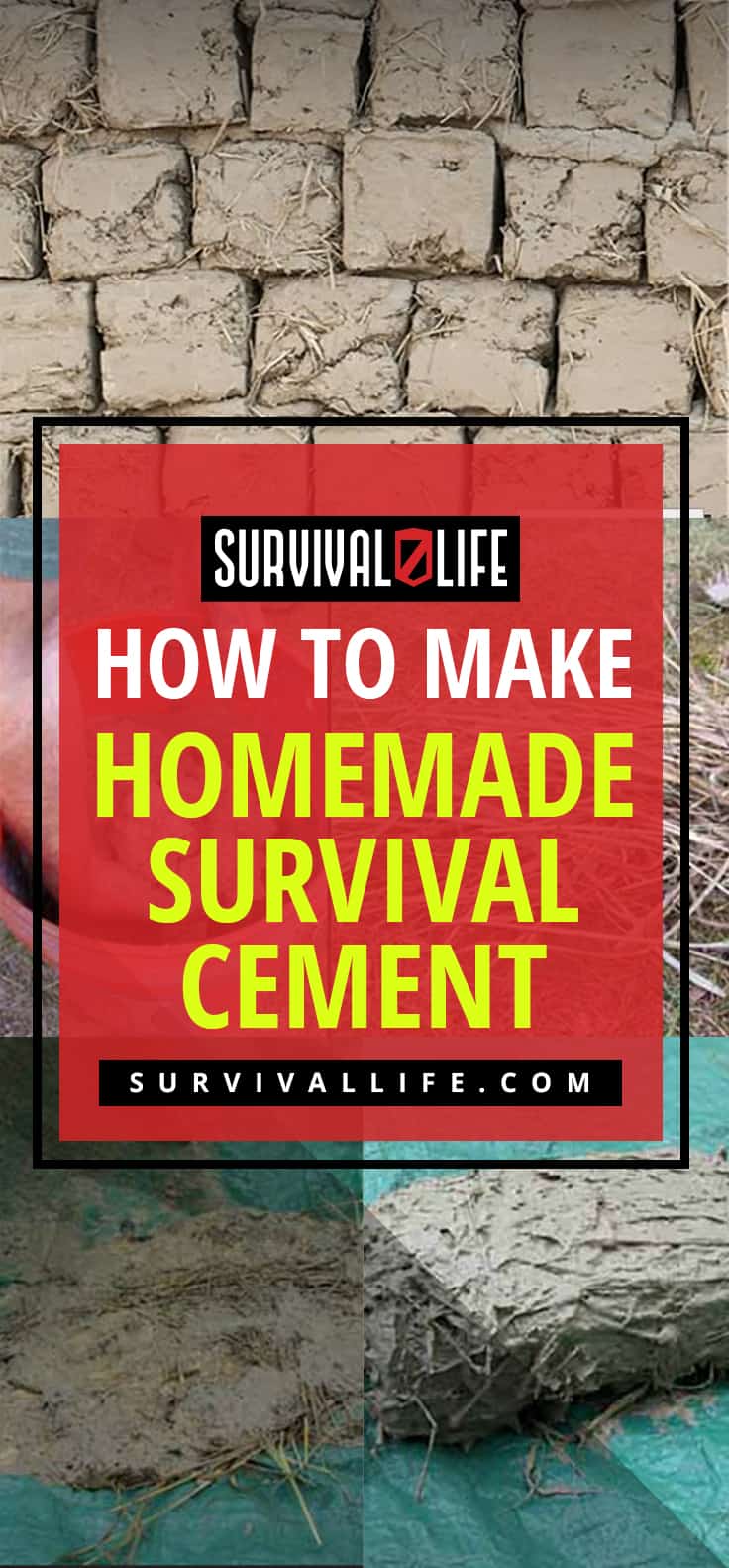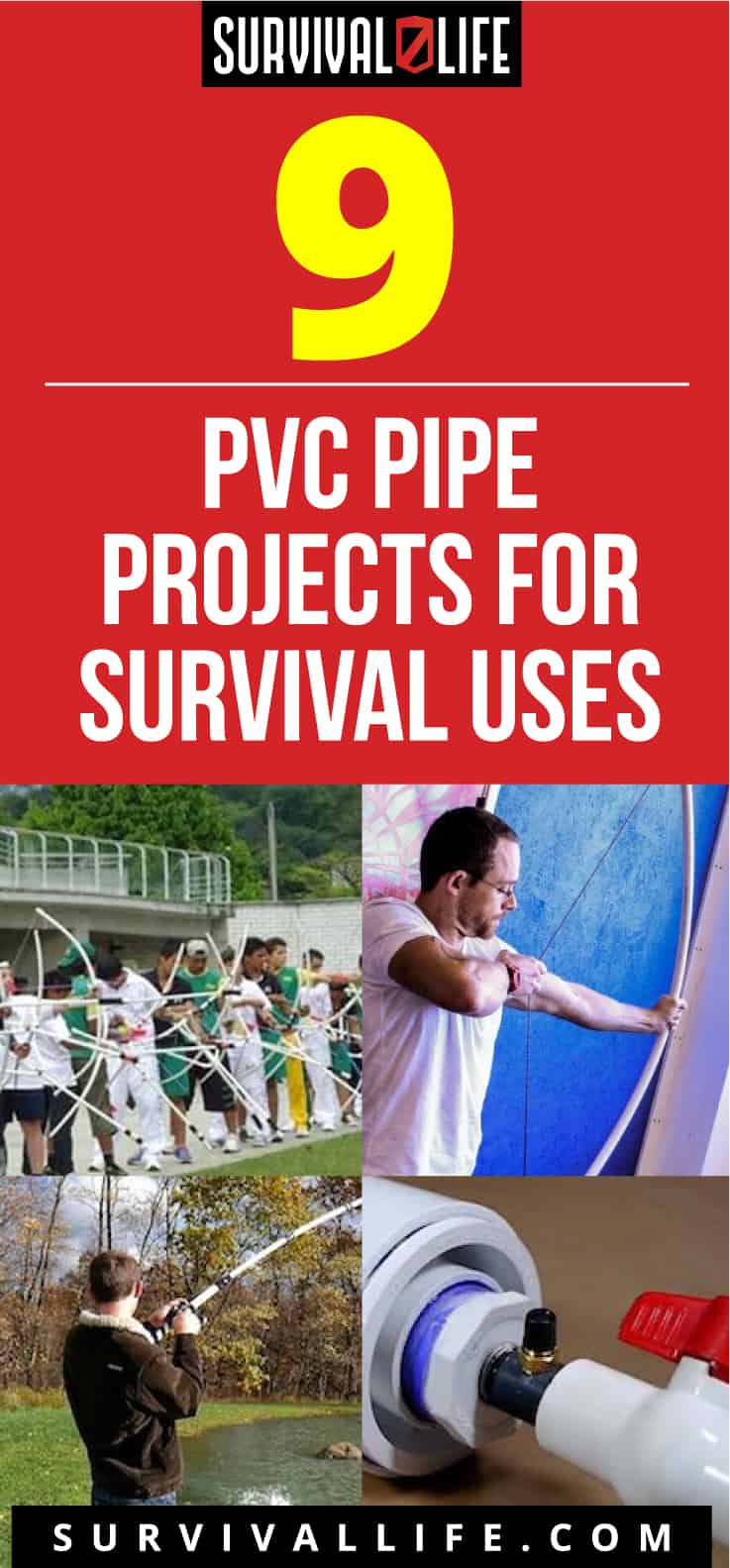The following post 13 Things NOT To Do When Disaster Strikes was originally published on https://totalsurvival.net/
This post may contain affiliate links. If you make a purchase, I'll earn a small fee at no extra cost to you.*



Plenty of attention is given to the things you should do when disaster strikes. However, knowing what not to do can be just as important for your survival. In this list, you’ll find 13 things that you should avoid doing at all costs when disaster strikes.
1. Panic
Few things are more likely to cost you your life when the chips are down than panicking. While fear serves an evolutionary purpose in that it makes you aware of the danger, panic is fear’s ugly cousin, dulling your senses and your survival instincts. If disaster strikes, take a deep breath, stick to your plan, and do your best to stay calm.
2. Stare at the TV
With every news station in the country broadcasting updates about the disaster 24/7, it’s easy to fall into a state of shell-shock where you sit and stare at the TV, hanging on the news anchor’s every word. However, time spent staring at the TV is time not being spent preparing for your survival. Once you have a solid grasp of what has taken place, shut off the TV and get to work.
3. Decline Government Aid
Many preppers have a lone wolf attitude, convinced that they can survive whatever the world throws at them all on their own. When you combine this attitude with a general distrust of the government, it leads some people to actually turn down government aid such as food and water after a disaster. However, smart survivalists know that you should take advantage of every resource you have available – government aid included.
4. Bug Out Into the Woods
Bugging out is something that takes planning and preparation. You need to have a bug out bag prepared as well as a specific destination in mind. If all you are doing is running haphazardly into the woods with little to no supplies in-tow, you can’t expect your odds of surviving to be very high.
5. Act Like Rambo Resurrected
The aftermath of a disaster is no time to strap on your combat gear and start parading around the street with a gun in hand like a modern-day Rambo. Doing this will only draw unwanted attention from other civilians as well as any cops or military personnel that might be in the area. While it’s good to have firepower and combat gear in case situations take a turn for the worse, keep these things on the down-low and do your best to blend in and not stand out.
6. Blame Yourself
The blame game is a game with no winners, especially when you blame yourself. When a disaster strikes, you’ll probably think of all sorts of things you should have done to make yourself more prepared. Even experienced preppers will probably be kicking themselves over a few things, but doing this is a waste of time. It will only slow you down when you should be focused on your survival plan.
7. Blame Everybody Else
Maybe you won’t blame yourself for anything. Maybe instead you’ll blame the president, or congress, or the deep state, or another country. And maybe they deserve the blame, but there will be plenty of time to think about that later. Getting angry and blaming the people responsible is a waste of time and energy you should be using toward putting your survival plan into action.
8. Resort to Lawlessness
Major disasters have a way of turning law-abiding citizens into shameless criminals in little time at all. However, when it comes to resorting to thievery and other acts of lawlessness after a disaster strikes, the risks far outweigh the rewards. Not even taking into account the moral implications of this behavior, attempting to steal supplies following a disaster is likely to get you shot. It’s far better to have your own supplies than to find yourself on the wrong end of a gun while trying to steal someone else’s.
9. Run to the Store
The moment disaster strikes, food, water, and other supplies suddenly become invaluable. With this being the case, it may be tempting to run to the store in order to stock up on cheap supplies as soon as you learn about the disaster. However, the time to stock up on supplies is before a disaster strikes, not after.
The problem with booking it to the nearest store in the heat of a disaster is that everyone else is going to have the same idea. Not only will you be unlikely to secure any supplies before they’re gone, you’ll also be entering a dangerous area full of desperate people willing to do whatever it takes to ensure they’re the ones who walk out with that last bottle of water.
10. Ignore Your Basic Needs
Basic needs such as food, sleep, and hygiene don’t go out the window when disaster hits. Following a disaster, make sure you continue to take care of yourself and provide your body with the things it needs in order to be in optimum condition. As much as possible, try to eat balanced meals, take your meds, get plenty of sleep, keep yourself clean, and so forth. This will keep you strong both physically and psychologically.
11. Take Care of Everyone Who Shows up on Your Doorstep
One of the hardest things about being prepared when others are not is having to turn away people who are looking for help. As gut-wrenching as this might be, though, there comes a point where it is a necessity. It goes without saying that your number one goal is to keep yourself and your family alive, and you can’t do that if you give supplies to every stranger that shows up on your doorstep. (BTW, if you turn people away, you’ll need some great home security measures to make sure they can’t get in.)
12. Despair
A major disaster can turn your world upside down, leaving you feeling hopeless. It’s important to remember, though, that no matter how desperate the situation is all hope is not lost. So long as you are still breathing, planning, and doing what it takes to stay alive, you still have a chance. No matter how hopeless your situation might seem, don’t despair.
13. Keep Your Family in the Dark
Wanting to spare your family the trauma of finding out that a horrible disaster has taken place is a noble cause, but it’s also a dangerous one. In order for all of you to survive what comes next, you all need to be on the same page, fully understanding what it is that you are up against. Sit your family down and explain to them in a calm, level tone what has happened and what the next step is rather than keeping them in the dark.
 This article first appeared on urbansurvivalsite.com See it here
This article first appeared on urbansurvivalsite.com See it here
Article Source Here: 13 Things NOT To Do When Disaster Strikes










